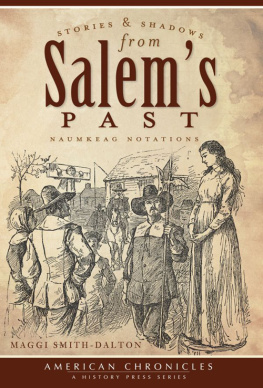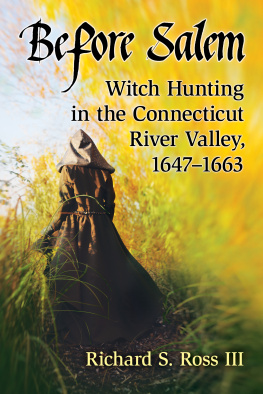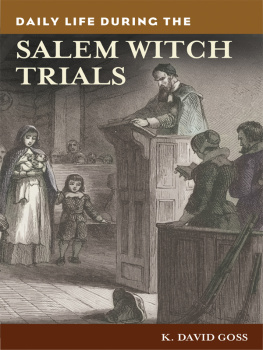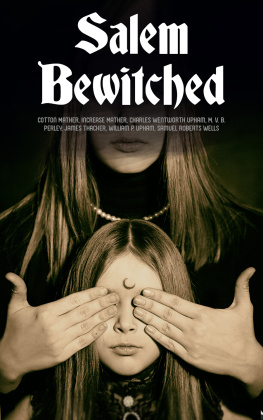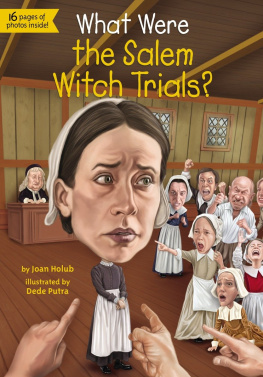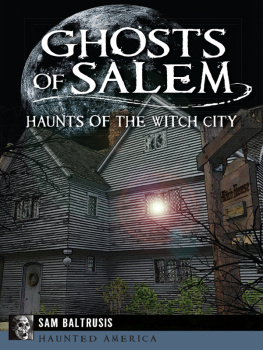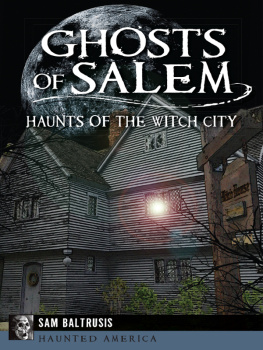Published by The History Press
Charleston, SC 29403
www.historypress.net
Copyright 2012 by Maggi Smith-Dalton
All rights reserved
First published 2012
e-book edition 2012
ISBN 978.1.61423.660.3
print ISBN 978.1.60949.551.0
Library of Congress CIP data applied for.
Notice: The information in this book is true and complete to the best of our knowledge. It is offered without guarantee on the part of the author or The History Press. The author and The History Press disclaim all liability in connection with the use of this book.
All rights reserved. No part of this book may be reproduced or transmitted in any form whatsoever without prior written permission from the publisher except in the case of brief quotations embodied in critical articles and reviews.
Acknowledgements
There are so many people to thank, and if I have inadvertently neglected someone, I beg their forgiveness (I plead sleep deprivation!). The list of wonderful people who helped me in my journey during the research of this book includes local colleagues Bob Booth, Nelson Dionne and Jerry Curley, who have graced me with their friendship and shared historical interests with me for many years. Special thanks to Joe and Jeanie Galvin for many kindnessesand the gift of friendship. At the Salem Public Library, Jane Walsh shows daily how wonderful a reference librarian can be. The Peabody Essex Museums Phillips Library is a true gem, and I thank the librarians and staff, including Sidney E. Berger, Kathy Flynn, Irene Axelrod and Andrew French. At the Peabody Essex Museum (PEM), curators Dan Finamore and Karen Kramer Russell generously shared their insights with me about sailors/seafaring and Native American shape-shifting culture (and so much more!). I owe very special thanks to my talented friend and colleague at the PEM, April Swieconek, the very definition of a gracious lady. The Peabody Essex Museum, under the inspiring leadership of Dan Monroe and Lynda Hartigan, has given me many hours of delight and intellectual enrichment and is the living continuum, the very heart, of Salems historically awesome intellectual culture. More friends and colleagues to thank for always making me feel welcome there include Whitney Van Dyke and curator Phillip Prodger.
Thanks also to my friend Neil Gladd and to the staff at the Rare Books Department at the Library of Congress; to Lieutenant Conrad Prosniewski of the Salem Police Department; and all the helpful scholars from the H-AMSTDY discussion network who helped me track down great resources on Swedenborg. Thanks also to the wonderfully patient and supportive Jeff Saraceno, Dani McGrath and project editor Darcy Mahan at The History Press.
I owe a lifelong debt of gratitude and undying admiration to my Skidmore American Studies mentor, Dr. Gregory M. Pfitzer, an exemplary historian, and to the inspiration and never-failing support of my mentor at Lesley University, Dr. Meenakshi Chhabra.
My husband, Jim Dalton, is the blessing of my life. Though living with a wife who is sometimes more than a bit distracted, and insanely busy himself, he is never-failing in his love, support and understanding.
As always, if you have any questions, feel free to contact me anytime by visiting my personal website, singingstring.org, and dropping me a line.
Introduction
What a long, strange road its been.
I look at this new child of mine with a sense of bemusement.
As some of you may know, I included a short look at the psychic past lives of Salem in my first book, Stories and Shadows from Salems Past: Naumkeag Notations. It was kind of fun stuff, I thought, intriguing, to be sure, but I didnt give it much thought beyond that brief treatment. I thought it might give me another article or two someday, maybe even another book, but I didnt plan to revisit the subject anytime particularly soon.
So, how did I get here?
A BIT OF BACKSTORY
In the past two years, my projects included two new recordings of nineteenth-century historical music, immersing me, as usual, in listening to the emotional life of the century. I also recently completed and presented scholarly work on the role of music in civic public ritual in postCivil War and Gilded Age Salem and Boston. As I did all this research thinking about the importance of performance sites and a sense of place in the framing of ritual events and the ways in which these elements operated in a society attempting to recover from the trauma of the Civil War, an article I stumbled across in an issue of the Essex Institutes Historical Collections caught my eye.
It was the published text of a paper read before the institute in 1892 entitled Were the Salem Witches Guiltless? Hmmm. I decided I should look into its assertions when my other projects were finished for the summer. In doing so, I confess, I was surprised and hooked. Place, ritual, historical memoryit was all there to explore again.
The story of Spiritualism and the rise of the occult (although, as we will see, they are somewhat separate developments) has a particular twist when surveyed from a Salem, Massachusetts perspective, and this book traces that story.
Salems journey is our connecting thread here, but my thinking on the matter is broader, more contextual. The rise of Spiritualism and the occult in Salem was one aspect of a rather startling national and international story. A historian, of course, always considers local narratives to be important and essential parts of the puzzle to be assembled, especially when unearthing tales not yet told. Yet caution is wise.
Local historians sometimes fall prey to a myopia that leads the speaker or the writer to extol ones own subject, town, profession or heritage as uniquely virtuous, successful, enterprising or blessed. In the interests of a good story (or from longstanding native acquaintance with their subject), the temptation arises for regional authors to attribute motivations to their subjects that cannot always be documented; some even fall into the ultra-literary omniscient narrator trap.
Well, although boosterism or hagiography is never appropriate in the toolkit of a modern historian, such intent typically drenches the older historical works one consults for background. The writers of such works were most often those from the dominant regional political, ethnic and/or economic classes. Unsurprisingly, such writers, even the careful ones, were often highly partisan to their class, gender or political beliefs; many wrote with a polemical intent. Memoirs and biographies often display a hagiographic tinge. Most of these writers were amateur historians of predominantly literary bent; the prose style is romantic and often lushly colorful.
Adding to the complications for modern research, New England writers had an overweening tendency to erect and worship at genealogical totem poles; habitual tropes of ancestral adoration must always be expected when reading their works. Salem, where European founding generation roots run deep, has been a prime hotspot for this type of veneration.





